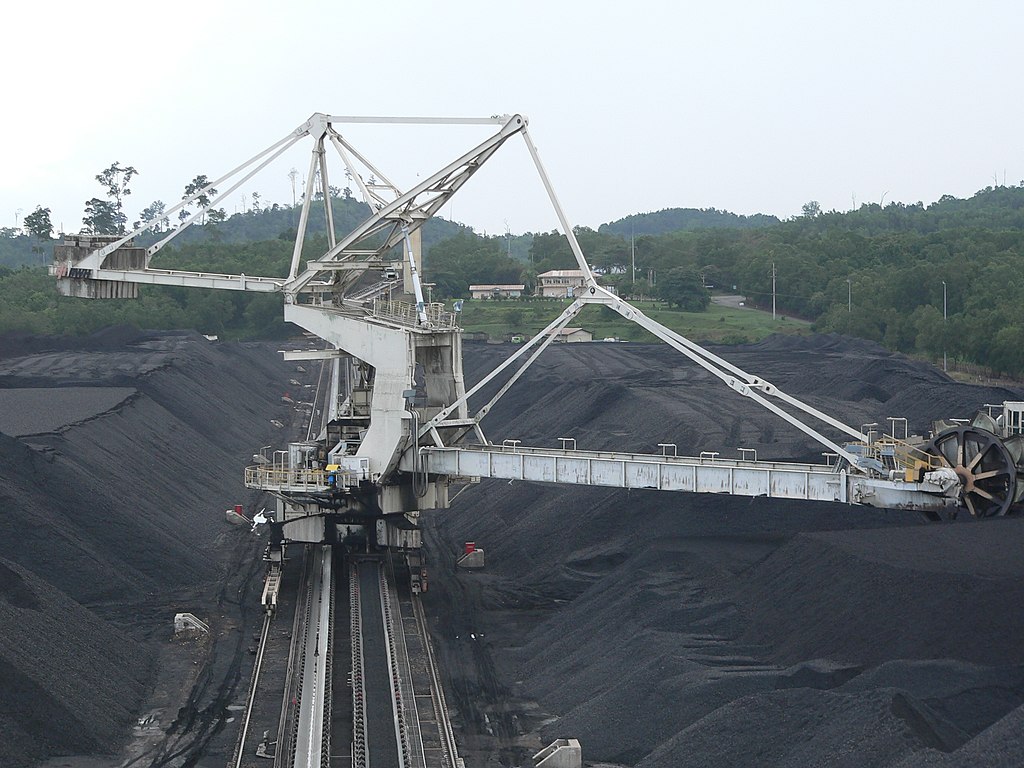By John R. Platt, The Revelator. Originally posted on The Revelator.
Surprisingly, the climate-threatening industry is still in a growth mode in some parts of the world. Will that change fast enough to save the planet?
What does the future look like for coal?
If you listen to coal insiders, the next few years will still burn bright for the notoriously polluting industry. According to data analytics company GlobalData, coal production will “grow exponentially to 2022,” with more than 300 potential new coal projects launching over the next four years. GlobalData predicts annual production increases in India, Indonesia and Australia at a staggering 10.9 percent, 3.9 percent and 2.3 percent.
Although GlobalData also predicts that 100 projects will close worldwide, the company anticipates a total annual coal production increase of 1.3 percent over the next four years, which follows a modest growth of 2.8 percent in 2017 and 0.1 percent in 2018.
But other experts offer a different picture, one that paints the coal industry with a far less certain brush. They point to climate change, failing economics, bank divestment, polluting technology, legal and social challenges, the rise of cheap natural gas (another potent source of greenhouse emissions) and vast improvements in renewable energy technologies. Combined, these factors suggest the coal industry may struggle to stay viable in the coming years.
For now, though, the question seems to be: Will the coal industry fade quickly enough to make a difference for the climate — or will it keep chugging along at current levels?
“Are we on a long flat plateau, which would still mean a disaster for the planet, or are we on an escalating downward path, a path toward actually saving the planet?” asks Justin Guay, director of global climate strategy at the Sunrise Foundation, which advocates for closing coal plants and shifting financing out of fossil fuels.
Demand, Not Supply
A 2015 report by activist groups found a critical mass of banks in 2014 were starting to refuse to finance environmentally destructive coal projects. Credit: The End of Coal? report 2015
One major problem with GlobalData’s numbers is that coal production may be rising, but coal consumption hit its apex five years ago.
“Global coal consumption peaked in 2014 and has declined marginally since then,” says Tim Buckley, director of energy finance studies at the Institute for Energy Economics and Financial Analysis. “Opening up new supply won’t increase demand, unless it results in an oversupply that forces the market price of coal down, so there is a price-driven increase in demand.”
That seems unlikely, since the price of coal has actually gone up over the past few years, Guay points out.
“That’s partially because we’re finally forcing the coal industry to pay for its externalities — mostly for air pollution, but also for water pollution and other things that they do to degrade the environment,” he says. “Once you slap these new technologies on a coal plant, their competitiveness against the newer, cleaner, cheaper stuff gets worse and worse and worse.”
Instead of looking at production, Buckley develops his own projections by looking at electricity demand, which partially drives the demand for coal. “China, India and Southeast Asia are all seeing electricity demand grow, whereas in America, Japan, Europe and Australia electricity demand has been flat at best for a decade,” he says.
Globally electricity demand increased by 27.5 percent between 2007 and 2017, according to IEEFA calculations. During that period, China’s energy demand nearly doubled, while India’s increased by 88 percent. Conversely, energy demand in the U.S. actually fell 3.4 percent during the same decade.
The reason coal has had such a growth curve in Southeast Asia is that renewable energy levels started so low in the region that countries turned to coal to keep up with demand. That’s about to change, Buckley says, as renewables have made enough inroads to the markets and are now growing at a pace that should cover all further increases in electricity demand.
“In India, in the 11 months to February 2019 net new thermal coal power additions were 20 megawatts whereas net new renewable energy installs were 6.7 gigawatts,” he says. “This is straight from the Central Electricity Authority reports — facts, not a forecast. Peak thermal coal in India is within sight. Other countries reliant on more expensive imported coal — think Thailand, Vietnam, Pakistan, Philippines, Malaysia — will see renewable energy tariffs fall below import coal-fired power plant tariffs over the coming five years. At that point thermal coal goes into a slow, inevitable, technology- and finance-driven terminal decline trajectory.”
Profits in the Wind
Speaking of renewable energy, the growth and improved efficiency of wind and solar power continue to chip away at coal’s market.
This comes in combination with the coal industry’s increasingly bad economic outlook.
A new report, issued March 25 by the policy group Energy Innovation, finds that 74 percent of existing coal plants in the United States actually cost more to operate in 2018 than it would cost to replace them with new wind and solar plants — often as much as 25 percent more.
According to the report, coal is at a “cost crossover” point in the United States, where the expense of operating a coal plant puts them financially at risk, compared to building new wild or solar projects.
This is a new dataset, but the trend has been clear for some time.
“If you look at the global model published by Carbon Tracker, 42 percent of existing coal units around the world are cash-flow negative today, which means essentially they’re bleeding money and not sustainable,” says Guay. “By 2030, 56 percent of all units around the world — China, India, everywhere — will be cash-flow negative. It’s pretty hard to maintain market share or let alone grow if you’re more expensive than your competitors. And that has been something that has been building for several decades as wind and solar costs have declined.”
Money Talks
As for cash, it’s becoming harder and harder for coal companies to get their hands on it.
World’s biggest insurance company to divest from coal. So, that’s good
h/t @Guay_JG https://t.co/JWwI4wenRb
— Bill McKibben (@billmckibben) August 6, 2018
Around the world banks and other financial institutions are pulling their money out of the coal industry. Recent research authored by IEEFA’s Buckley finds that more than 100 major financial institutions have restricted coal funding since 2013.
The pace is accelerating. At least 34 of these divestments occurred just since the start of 2018. It’s not enough to compensate for the estimated $1.9 trillionthat banks have invested in fossil fuels since the Paris Climate Agreement in 2015, according to a new report from the Rainforest Action Network, but it’s a sign that coal financing is quickly becoming not worth the risk.
The limited access to investment capital is already making a difference when combined with the growth in renewables, Buckley reports.
“I was on a CoalTrans India panel debate with Tata Power, the largest private company in India a couple of weeks back. The opening comment from Tata was that they will never again build another coal-fired power plant in India. Why? Bank finance is not available, and renewable energy is now materially lower cost than a domestic thermal power plant in India… There goes the biggest growth market for coal globally — puff, gone.”
Buckley expects similar shifts in China in the next two years.
“It is very telling that this month the biggest Chinese holding investment company, SDIC, announced it had completed its exit from the coal industry now, two years ahead of schedule,” he says. “Coal was the single biggest profit contributor to SDIC over the last decade. This is a first for China, and it’s unlikely to be a lone event.”
Meanwhile, Buckley says he feels that lack of finance is already delaying previously announced projects, pointing to a laundry list of announced projects that have missed their expected start dates. “I would suggest new thermal coal mine developments are being delayed because global capital is rapidly reassessing the long term viability, and Chinese, Japanese and South Korean equity is far less available than it was five years ago,” he says.
The Social License
Protesters call for an end to coal outside the UN climate talks in 2017. Credit: Ashley Braun, DeSmog
One of the reasons banks are pulling out is, of course, the risk to the planet — which may explain why public sentiment also has something to do with it.
“The social license for the industry has completely eroded,” adds Guay from the Sunrise Foundation. “Coal is now viewed as a toxic substance. It’s whispered in the same breath as tobacco or asbestos. Nobody wants to be associated with this industry. And when that happens, it’s pretty hard to then turn around to political benefactors ask for help. So that’s been a pretty big deal.”
As that social license dissolves, announcements of new coal projects around the world are being met with outcry, protests and lawsuits.
“People are joining together to dismantle the power of the fossil-fuel industry, cut their funding, and stop fossil-fuel projects in their tracks,” says Hoda Baraka, global communications director for the activist group 350.org.
Coal’s Last Gasp — and Ours?
But even with all of these threats to the industry, the industry still presents itself as healthy.
Once again that’s nothing new, says Guay, who points out a history of industry reports projecting dramatic growth over the past few years — most of which never materialized.
In many ways, though, the coal industry really is growing, at least for now. China, for example, just approved four massive new mines in an effort to grow its economy.
“We’ll see growth in places like India, Indonesia and Southeast Asia writ large,” says Guay. “But those growth centers can’t make up for the absolute declines we’re seeing, particularly in the U.S. but also in Europe, Australia and other countries where electricity demand is flat.”
Still, that worldwide growth, the experts tell us, puts the planet in peril.
“We cannot afford to build any more coal-fired power stations,” says Baraka. “Every ton of coal burned makes an immediate contribution to the quantity of CO2 in the atmosphere, causing long-term and irreversible climate change. We need to keep fossil fuels in the ground now to ensure that we stay below 1.5 degrees in order to avoid catastrophic environmental breakdown.”
Everyone we interviewed for this article highlighted the absolute need to accelerate efforts to get rid of coal and disrupt this growth cycle.
“Of all the ways we generate energy, coal has just got to be the worst from start to finish, from extraction to burning and beyond,” says Guay. “It’s polluting along that entire chain. And frankly, even if climate change were not the existential threat I think it is, it would still merit disappearing from our lives based purely on air pollution concerns, water pollution concerns, and any of the other number of toxic elements that the industry spews every day. So yeah, to me it couldn’t be gone from our lives fast enough.”
Main image: The Tanjung Bara Coal Terminal in East Kalimantan, Indonesia. Credit: Ivan Humphrey, CC BY 2.0
Subscribe to our newsletter
Stay up to date with DeSmog news and alerts









